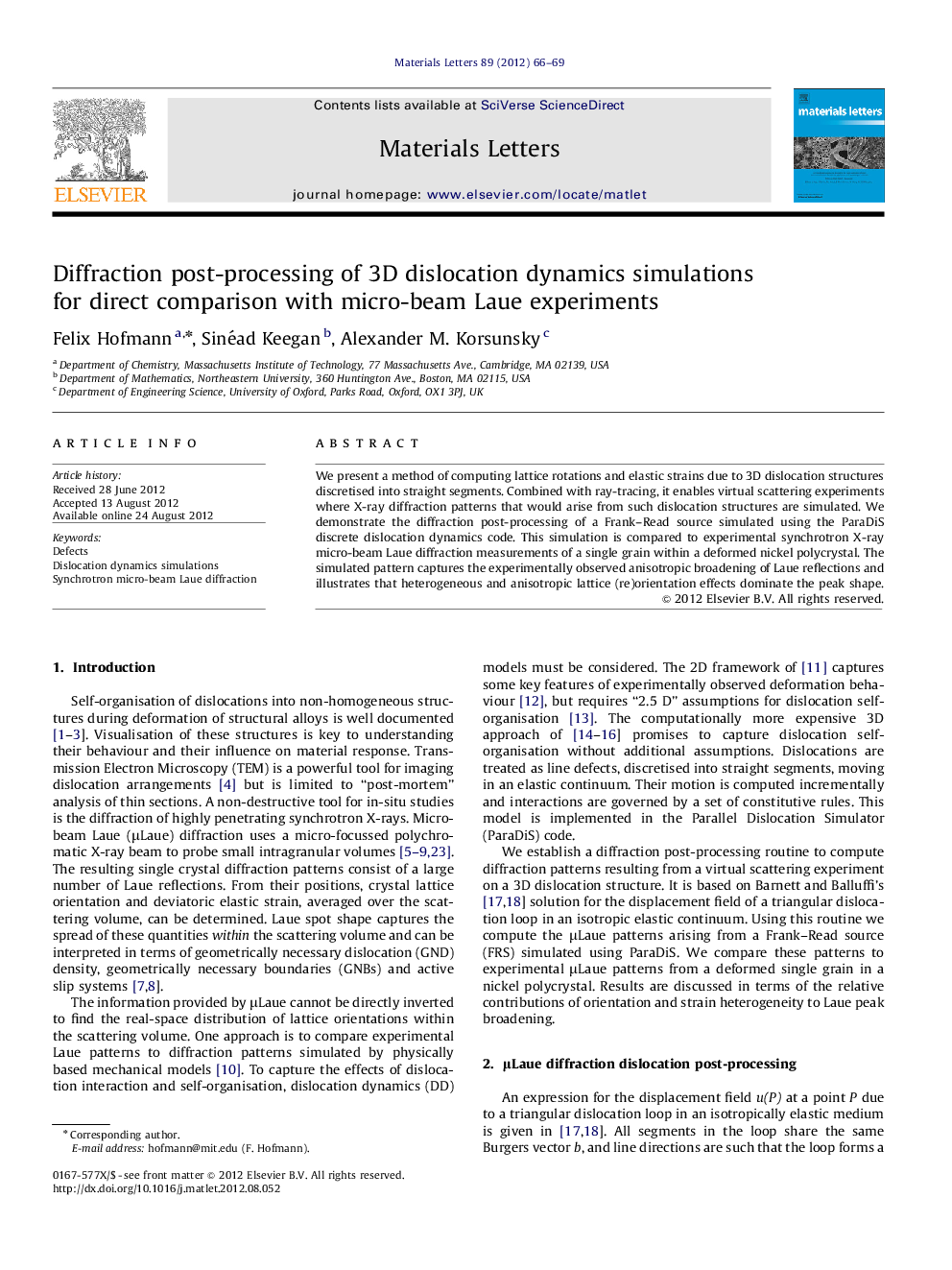| Article ID | Journal | Published Year | Pages | File Type |
|---|---|---|---|---|
| 1646205 | Materials Letters | 2012 | 4 Pages |
We present a method of computing lattice rotations and elastic strains due to 3D dislocation structures discretised into straight segments. Combined with ray-tracing, it enables virtual scattering experiments where X-ray diffraction patterns that would arise from such dislocation structures are simulated. We demonstrate the diffraction post-processing of a Frank–Read source simulated using the ParaDiS discrete dislocation dynamics code. This simulation is compared to experimental synchrotron X-ray micro-beam Laue diffraction measurements of a single grain within a deformed nickel polycrystal. The simulated pattern captures the experimentally observed anisotropic broadening of Laue reflections and illustrates that heterogeneous and anisotropic lattice (re)orientation effects dominate the peak shape.
► We develop a method for diffraction post-processing of 3D dislocation structures. ► It makes direct comparisons between dislocation simulations and experiments possible. ► Laue patterns due to a Frank–Read Source are computed and compared to experiments. ► Laue peak broadening is dominated by lattice orientation spread. ► Lattice strain effects become visible in small scattering volumes.
